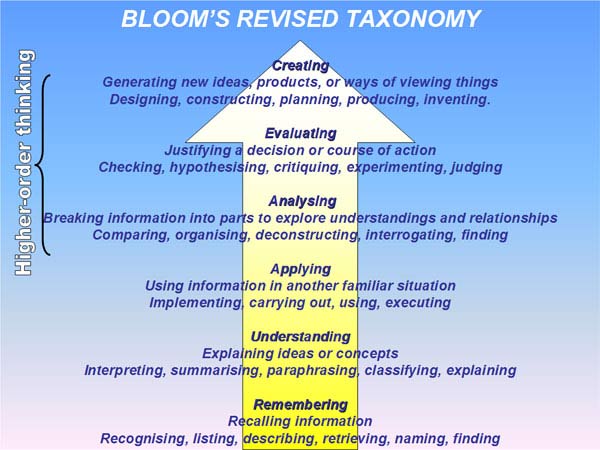
Mark Prensky’s “Shaping Tech in the classroom” visual note by Nicki Hambleton
On being Literate
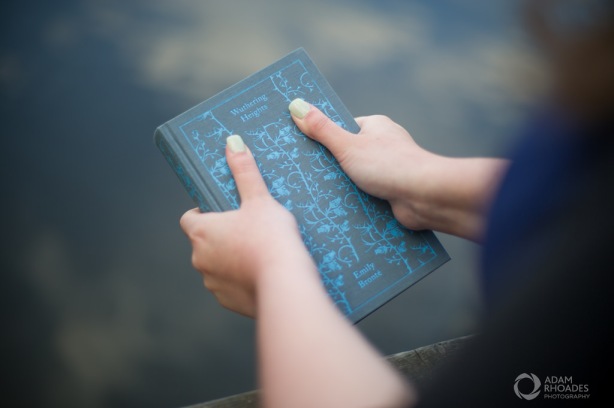
Photo Credit: adamrhoades Flickr via Compfight cc
Today’s classroom is a far cry from when I started teaching back in the 1990’s. Nowadays, schools may have a 1:1 laptop programme, BYOD, a suite of static computers or trolleys of iPads to use. Students communicate via online learning platforms, such as Edmodo or Teamie, write and submit assignments via Google docs and create a plethora of ideas using devices or applications. Technology is evolving at an astonishing rate and educators are responsible for students ever-changing skills as a result. What does it mean to be literate in today’s technology-driven education? What are the necessary skills needed to navigate, communicate and create?
When we consider being literate we think about being able to read and write. According to the dictionary, being literate is to have “education or knowledge, typically in a specified area” (Oxford Dictionaries, n.d). Being able to read and write has always been a basic requirement to understand the world around and the standing block of Primary education. But the world around has changed and, in the 21st century, being able to understand and navigate the digital world is becoming a necessity. To be able to interact and communicate; to read, interpret and dissect information; to connect and collaborate online and to be able to trust and research what is real and what is not are skills today’s students need to be taught.
Marc Prensky described Millenials as “Digital natives” having being born into the digital era and thus more naturally capable and adaptable to the skills needed when using technology. (Prensky, 2001) But do we assume digital literacy? In 2015, the Pew Research Center reported that “in the US, about 5 million households with school-aged children did not have access to the internet at home.” and “many homes did not have laptops or computers” leaving students to use their phones to access websites and facilities online (as cited by Abumu, 2017 ). How can so many students without adequate access possibly become fully literate in the digital skills needed to sail through university? What does it mean to be digitally literate? And what of the “digital immigrants”: instructors and teachers who ventured into technology later in their careers. How might this polarisation limit development or become barriers to our students’ 21st-century progress?
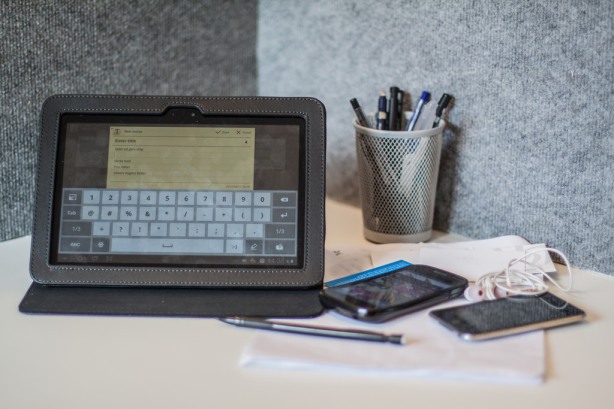
Photo Credit: Sina Farhat Flickr via Compfight cc
What is Digital Literacy?
In his book of the same name, Paul Gilster describes digital literacy as “the ability to understand and use information in multiple formats from a wide range of sources when it is presented via computers.” (P Gilster, 1997). He says that being literate has never been solely about being able to read and write, but it is about understanding and making meaning from what we read. In 1974, Paul Zurkowski explains that “information is not knowledge” but that it is important for the consumer to know what to do with that information, how to work with it, and use it for other purposes, such as problem-solving. “Information is a tool to accomplish a purpose” (as cited by W Badke, 2010). Therefore we can ascertain that digital literacy is about interpretation, understanding and cognition of what we see.
Multiliteracies
20 years on from Gilster’s first use of the phrase, we must now look in more depth at what specific literacies are needed to enhance students skills to survive and thrive in the 21st century. 3 such resulting digital literacies are Information Literacy, Visual Literacy and Media Literacy. As communication changes with the advances in technology, these literacies are multimodal (C Jewitt, 2008) often combined and supportive. One cannot visit a website or blog, such as this, without finding it necessary to interpret an image alongside information. Being competent in understanding texts, interpreting images and other media through digital sources is the new backbone of education, as the internet is their primary source of learning both inside and outside of the classroom. As students become older and more independent learners, they are more vulnerable to a wider range of sources, including social media, and it is imperative that they are able to discern and navigate through this wilderness of information to find truth, meaning and understanding.
In her TED Talk, “Creating critical thinkers through media literacy”,Andrea Quijada searches for “that untold story” in order to deconstruct stories, or decode adverts, films or other media. (A Quijada, 2013). A student of hers said that “media literacy connects school to real life”. Doug Belshaw, in the Essential Elements of Digital Literacies, agrees that learning should connect to students’ interests and it is with this relevancy that motivation occurs. (Belshaw, 2012). He advises that both adults and students need to be motivated by their own interest rather than being enforced and, as “digital immigrants”, motivation needs to be high to inspire adults to learn something new and potentially challenging. My septuagenarian mother was positively inspiring when learning how to use an iPad several years ago to communicate and connect with family and friends.

Photo Credit: Tayloright Flickr via Compfight cc
Thinking becomes critical
With smartphones bringing the world literally to our fingertips, we consume and interact with so many sources of information every day. From videos to news sites and diagrams to data, we must learn how to interpret and understand this new form of knowledge and information. In the article “Connecting the Digital Dots: Literacy of the 21st Century”, authors Barbara Jones-Kavalier and Suzanne Flannigan advocate for the “need to teach true literacy – skills in analysis, synthesis and evaluation” (Jones-Kavalier and Flannigan, 2006). Referring to Bloom’s original taxonomy, these skills are essential for critical thinking. With the revised taxonomy, by Anderson and Krathwohl in 2001, synthesis is replaced by creating and it is this aspect of digital literacy which moves students from consumers to creators.
Remix

Photo Credit: the pain of fleeting joy Flickr via Compfight cc
Researching digital literacy brings forth multiple models, descriptions and articles. In order to move away from a description, Doug Belshaw, in his book and accompanying talk, identifies 8 essential elements of digital literacy: cultural, cognitive, constructive, communicative, confident, creative, civic, critical (Belshaw, 2012). It is here that he explains how Remix being at the heart of digital literacies (9:12). Just as Prensky talked about doing “new things in new ways” (M Prensky, 2005), Remix is about using new tools to create new learning. In the classroom, this might mean students use blogs to share their writing or artwork, communicating and collaborating with one another and connecting with students around the world for ideas and feedback: reading and writing remixed. In my classroom, art students still create art traditionally but use Padlet to share their progress and comment on each others’ work to review ideas. The tool changes how they interact and, as well as tracking their ongoing skills and progress, they can reflect and refine their work as a result. It visually keeps a record and students can see each others’ work to inspire or encourage where appropriate. This new form of participation and communication begins the process and practice to enhance their skills in new literacies. “Every time you’re given a new tool, it gives you a different way of impacting the world” (Belshaw, 2012).
Critical Digital Literacy
As our students consume even more information on a daily basis, critical digital literacy is now one of the main competencies of modern learning and it is imperative that we embed the skills in our curriculum. According to Juliet Hinrichsen and Antony Coombs at the University of Greenwich “Critical digital literacy consists of those skills, dispositions, and practices that enable one to critically read and create digital, multimedia texts” citing Freebody and Luke’s Four Resources Model of critical literacy. (1990) As a result of their research they developed a model with 5 dimensions of digital literacy as seen in the diagram below:

The 5 resources model of Critical Digital literacy by Juliet Hinrichsen and Antony Coombs at the University of Greenwich https://sites.google.com/site/dlframework/
As students struggle to decipher the wealth of real and fake news online, schools are under increasing pressure to integrate meaningful critical digital literacy into their curriculum. Kavalier and Flannigan mention that “few organisations have developed comprehensive plans that specify technical learning objectives or ensure successful integration of technology to enhance students’ digital and visual literacy”. (Kavalier and Flannigan, 2006). I would like to say that things have moved on over the past 11 years since their article but it may not be the case worldwide as some schools are still grappling with the effective execution of relevant 21st-century skill-based learning.
Just recently, Lokman Mansor wrote in the Straits Times that children in Taiwan were set to study a new curriculum “media literacy” in 2017, designed to teach critical reading of propaganda and the evaluation of sources in the hope of providing valuable training in journalism for the future but also to equip them for life in the information era. (L Mansor, 2017)
But children are not the only ones who need to learn these digital literacy skills. Many educators and administrators were not born into this digital world and also need to learn how to navigate and make sense of it in relation to their personal and professional lives.
It is with this that I am reminded of our ongoing consultation my team have been working on to articulate digital literacy across the school. This is by no means an easy task and it has taken many meetings and research to decide on the skills necessary from Kindergarten to IB. iLearn, a 5 year programme at UWCSEA, was introduced in 2010 to integrate 1:1 laptops, and over time Google apps to GSuite and, more recently, Teamie, our dedicated online learning platform. At the beginning, much of this was new to us all but as time progressed students and teachers alike became more fluent in their use of these tools, utilising them each day as part of their teaching and learning. The articulation process is a collaboration, developing a whole school digital literacy programme to track what literacies and skills are needed to best equip our students. The focus areas we have agreed upon are citizenship in a digital world, researching, creating, communicating and collaboration with digital tools, managing and operating digital tools and computational thinking. The discussions are rich and the research invaluable in creating a curriculum with longevity, a tough task with such a changing world we live in.
But is it enough just to be competent in modern literacies?
Moving towards Digital Fluency
Resnick, Rusk, and Cooke (1998) write, “Technological fluency means much more than the ability to use technological tools; that would be equivalent to understanding a few common phrases in a language. To become truly fluent in a language (like English or French), one must be able to articulate a complex idea or tell an engaging story–that is, to be able to make things of significance with these tools” (as cited by S Niessen, 2015)
When we learn a new skill, such as a new language, we aim for initial basic understanding, followed by competence, working towards fluency and this takes time and practice. It is so with digital skills. It takes time and experiences in multiple contexts to become more fluent in using technology, to select the appropriate tools and to be able to express ideas using them.
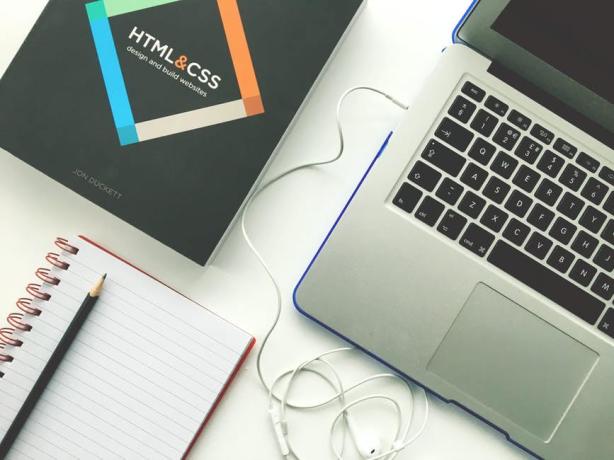
Photo Credit: Tayloright Flickr via Compfight cc
From consumers to creators
In order to further refine our competencies and work towards more fluency in digital literacies, we must look to develop deeper skills in our students that go beyond consuming. It is important that we allow students to learn about the why as well as the how of digital technology. Mitch Resnick, in his 2012 TED talk, “Let’s teach kids to code”, talks with enthusiasm about the importance of understanding how computers work and therefore the need to teach coding. He suggests that we move from traditional literacies to fully understand the realm we are learning in: “Read – read to learn; coding to learn”. He mentions the importance of coding to “think creatively, systematically and communication” and that we can become more fluent “by understanding it, manipulating it and creating” (M Resnick, 2012). Belshaw and Resnick both talk about moving on from “elegant consumption” (Belshaw, 2012) to creating and where Remix is the new working model of creativity.
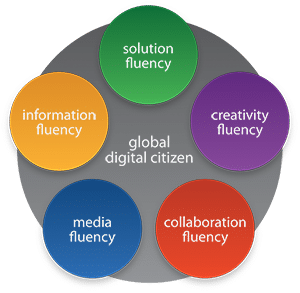
To delve deeper into fluencies, Andrew Churches and Lee Watanabe Crockett, of the Global Digital Citizen foundation, developed the 6 essential fluencies of innovative learning. In their book, “Mindful Assessment: the essential fluencies”, real-time problem solving and collaboration are cited as one of the most needed skills in industries as diverse as mining. (Crockett and Churches, 2017) In their previous book, “Literacy is not enough”, they identified a set of skills that students would require to “become architects of a future world we can only imagine and masters of challenges we cannot imagine” (Crockett, Jukes and Churches 2011) which were based on this diagram’s 21st century skills (or essential fluencies). It is refreshing to see a modern take on fluency in education, written by educators for educators and how these can help us in developing global digital citizens.
One can become overwhelmed with so many models, diagrams, and descriptions of what it must take to properly develop our youngsters for tomorrow’s world so we must sift through to find the best fit for our current school and context. We must weigh up the pros and cons and balance the needs of our schools with the wishes of our students. How do teachers keep abreast of new technologies to be competent let alone fluent in all aspects?
Old literacy and new literacies
In my classroom, we still work with traditional skills combined with modern technology, just as old literacies are just as relevant today as new multiliteracies. We still consume a lot of visual information and knowledge but we also look at remixing the old with the new, combining traditional forms of art with new and emerging ones. No one skill is enough to determine true fluency in art (or any other curriculum) and we cannot neglect the emergence of digital forms of art such as AR and VR. Just as Leonardo da Vinci utilised the lens as the modern technology of his era to develop the camera obscura and develop his art towards more realism, so too must we educators embrace the new world our students will be living and working within and help them to develop the necessary skills to be creators and innovators. Introducing the work of game designers, experimenting with immersive media like Teamlab, and yes, bringing coding into the art classroom may well be the new curriculum around the corner. This means we as educators must keep abreast of the new skills and needs our students require for their future careers and to make sure we are not left behind as“digital immigrants”. We must hone our digital literacies and converse with the younger generation to learn with them and thus become the empowering educators they need. To become more fluent, together we must utilise all we know from traditional literacy combined with what we now know about modern multiliteracies to best educate and equip students for the what the next 20 years will bring.
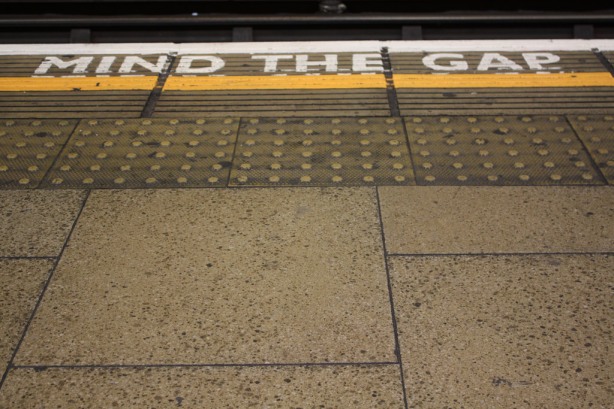
Photo Credit: spin’n’shoot Flickr via Compfight cc
Closing the Digital Divide
But how does the rest of the world keep up? How do children in impoverished areas develop these skills? Is the divide between the rich and poor widening with regard to digital literacy? With inequalities across the world, how do we lessen this gap whilst technology advances so rapidly? When will access to technology be free and available to all, so that consumers can become creators no matter their culture, status, age or upbringing? How could schools and communities help towards digital inclusion? (IMDA, 2017)
With the dawn of a new era of modern media, who will be left behind to widen the gap even further?

Photo Credit: Chris Jadoul Flickr via Compfight cc
References
Abamu, Jenny. “Students Say They Are Not as Tech Savvy as Educators Assume – EdSurge News.” EdSurge, EdSurge, 22 June 2017, http://www.edsurge.com/news/2017-06-20-students-say-they-are-not-as-tech-savvy-as-educators-assume
Badke, W. (n.d.). Foundations of Information Literacy: Learning from Paul Zurkowski. Retrieved from https://www.questia.com/magazine/1G1-218313845/foundations-of-information-literacy-learning-from
BELSHAW, DOUGLAS, AJ (2012) What is ‘digital literacy’ ? A Pragmatic investigation., Durham theses, Durham University. Available at Durham E-Theses Online: http://etheses.dur.ac.uk/3446/
Bloom’s Taxonomy. (n.d.). Retrieved from https://www.virtuallibrary.info/blooms-taxonomy.html
Jones-Kavalier, B and Flannigan, S. “Connecting the Digital Dots: Literacy of the 21st century” Educause Quarterly No 2, 2006
“Critical Digital Literacy Explained for Teachers.” Educational Technology and Mobile Learning, http://www.educatorstechnology.com/2014/12/critical-digital-literacy-explained-for.html
Crockett, Lee, et al. Literacy Is Not Enough: 21st-Century Fluencies for the Digital Age. Hawker Brownlow Education, 2012
Crockett, Lee, and Andrew Churches. Mindful Assessment: the 6 Essential Fluencies of Innovative Learning. Solution Tree Press, 2017
Gilster, P. (1997). Digital literacy age. John Wiley & Sons.
Imda.gov.sg, http://www.imda.gov.sg/community/consumer-education/digital-inclusion
Information Fluency – iTeach2. (n.d.). Retrieved from https://sites.google.com/a/alaska.edu/iteach2/topics/information-fluency
Jewitt, C. (2008, 02). Multimodality and Literacy in School Classrooms. Review of Research in Education, 32(1), 241-267. doi:10.3102/0091732×07310586
Mansor, L. (2017, December 30). The ills of fake news. Retrieved from https://www.nst.com.my/opinion/columnists/2017/12/319691/ills-fake-news
Prensky, M. (2001). Digital natives, digital immigrants. Marc Prensky.
Prensky, M. (2005, December 02). Shaping Tech for the Classroom. Retrieved from https://www.edutopia.org/adopt-and-adapt-shaping-tech-for-classroom
Resnick, M., & Rusk, N. (1996). The Computer Clubhouse: Preparing for life in a digital world. IBM Systems Journal, 35(3.4), 431-439. doi:10.1147/sj.353.0431
- (2013, February 19). Creating critical thinkers through media literacy: Andrea Quijada at TEDxABQED. Retrieved from https://www.youtube.com/watch?v=aHAApvHZ6XE
- (2012, March 22). The essential elements of digital literacies: Doug Belshaw at TEDxWarwick. Retrieved from https://www.youtube.com/watch?v=A8yQPoTcZ78
“The Essential Fluencies.” Global Digital Citizen Foundation, globaldigitalcitizen.org/21st-century-fluencies
“The 5 Resources Model of Critical Digital Literacy.” Google Sites, sites.google.com/site/dlframework/home
What is Digital Literacy? (2017, October 19). Retrieved from http://socialmediamastery.com.au/blog/what-is-digital-literacy/
What is Digital Literacy? (n.d.). Digital Literacy Skills for FE Teachers, 8-27. doi:10.4135/9781473909571.n2
What is digital fluency? (2016, July 20). Retrieved from http://blog.core-ed.org/blog/2015/10/what-is-digital-fluency.html
What is Digital Fluency?. Available from: https://www.researchgate.net/publication/283266223_What_is_Digital_Fluency [accessed Jan 03 2018].
Literate | Definition of literate in English by Oxford Dictionaries. (n.d.). Retrieved from https://en.oxforddictionaries.com/definition/literate
